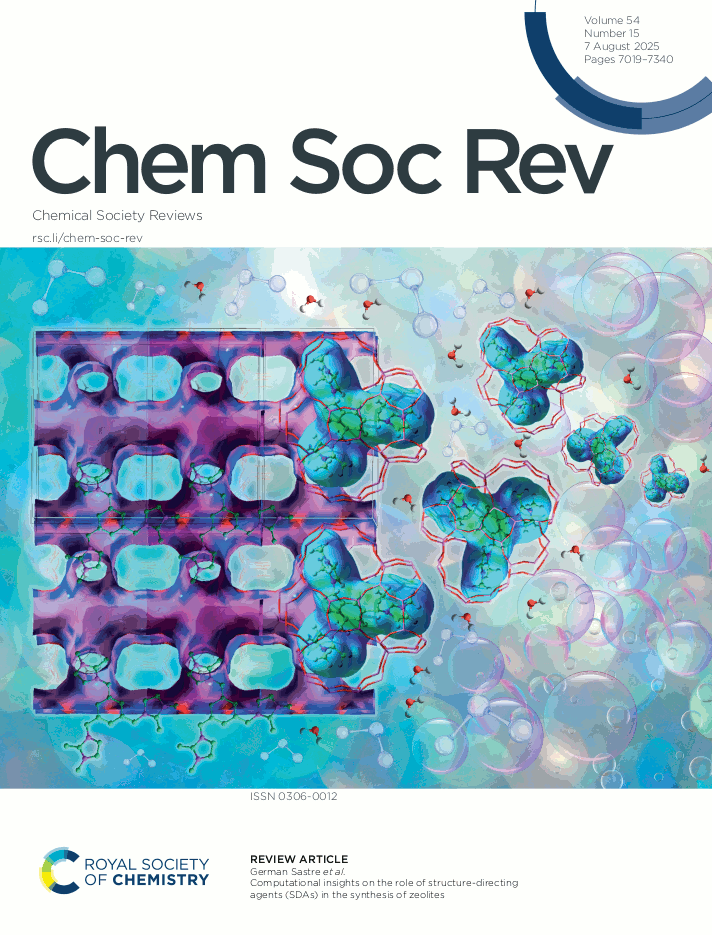Computational insights on the role of structure-directing agents (SDAs) in the synthesis of zeolites

Xiaomin Tang, Ömer F. Altundal, Frits Daeyaert, Zhiqiang Liu, German Sastre
Chem. Soc. Rev. 2025, 54, 7067-7092. DOI: 10.1039/d5cs00306g
Most of the zeolites synthesised in the last 3 or 4 decades employ organic structure-directing agents
(OSDAs) in their synthesis. The synthesis or test of new OSDAs is a major driving force in order to
achieve the goal of synthesising a new zeolite. Despite this, predicting which zeolite phase will form
when a specific OSDA is used remains a complex challenge. Moreover, even knowing the zeolite phase
that will be obtained using a given OSDA, it is not easy to always rationalise or fully explain the result
obtained. Computational simulations have occasionally been employed, and in a number of cases they are
limited to calculate the van der Waals contribution between zeolite and the OSDA molecules (zeo-OSDA).
Strongly negative values indicate an increasing viability of the synthesis, but it is only by comparison between
competing zeolite phases that some insight can be gained, and this has been done in a limited number of
cases. Other, less simple, approaches consider the total energy of the zeolite formed, of which the van der
Waals zeo-OSDA contribution is not always the dominant contribution. These and other similar procedures
need to be analysed and summarised in order to clarify the pros and cons of each approach. The recent
advent of big data has allowed to construct databases that make it possible to analyse a large number of
results. With the help of new descriptors and algorithms (some of them making use of artificial intelligence)
further advances have been made. In spite of the large pool of data available, it becomes
difficult to systematise and obtain general rules. A recent burst to this topic comes from the possibility
to (at least partially) control the Al distributions by selecting appropriate OSDAs.
These Al distributions influence the location and strength of Brønsted acid sites which in turn are directly
responsible for the catalytic activity of the material.